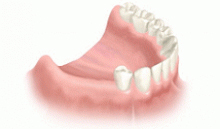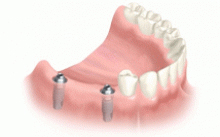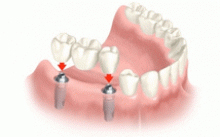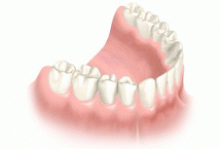Dental implants are often the only alternative to dentures in patients missing more than one tooth in a row.
The placement of a bridge is not advisable in the case of a long edentulous (tooth-free) span, as it places excess strain on the adjacent teeth.
If multiple teeth are missing, the placement of implant-retained teeth can prevent jawbone shrinkage and a prematurely aged appearance.
In many cases teeth can be affixed to the implants at the same appointment as the implant surgery so that the patient leaves our practice with brand new teeth.
Step by Step
1. Beforehand
After your consultation and x-rays some preparatory treatment may be required. If your teeth are still present, they may need to be extracted before the time of implant placement.
Alternatively it is often possible to extract the teeth at the same time as implant placement.
2. Placing the implants
This is usually a short procedure performed under local anaesthesia. Post-operative discomfort and swelling is rare. In visible areas, temporary teeth will be placed so that you can eat and behave as normal after the procedure.
3. Fitting the new teeth
After a couple of months a permanent bridge can be placed on the implants. This is a simple procedure with no discomfort. This can be performed at our office, or by your general dentist if you have been referred by them to us.
4. The beautiful result
The new, natural-looking bridge will handle all of the pressure, and look just like your natural teeth. Continue your usual dental hygiene to keep both teeth and gums healthy. You can now eat whatever you like.
|
    |




